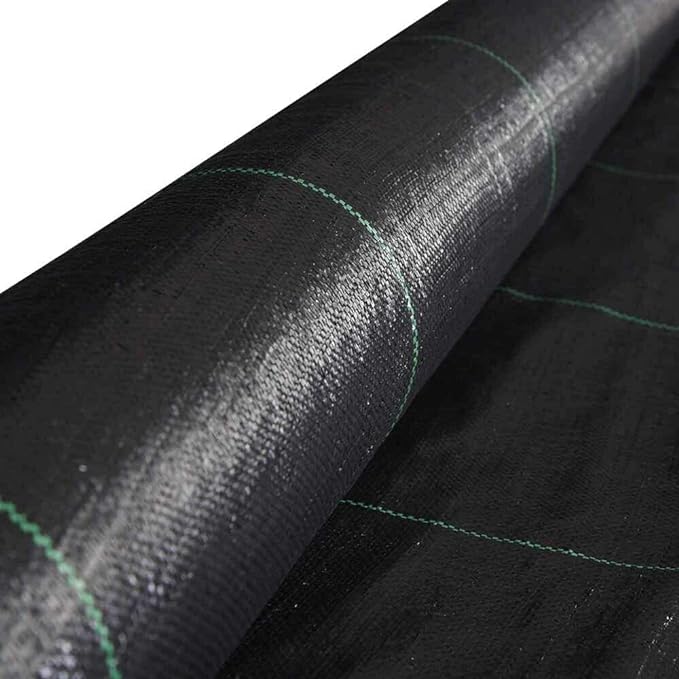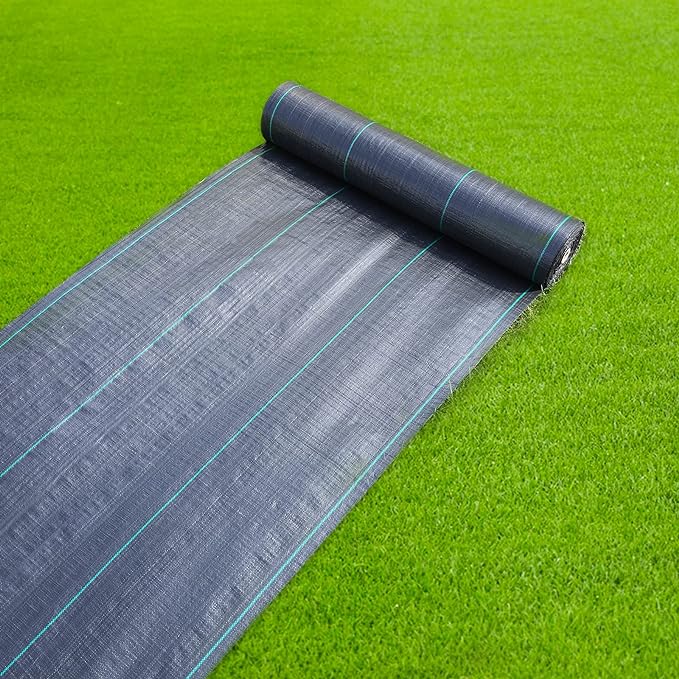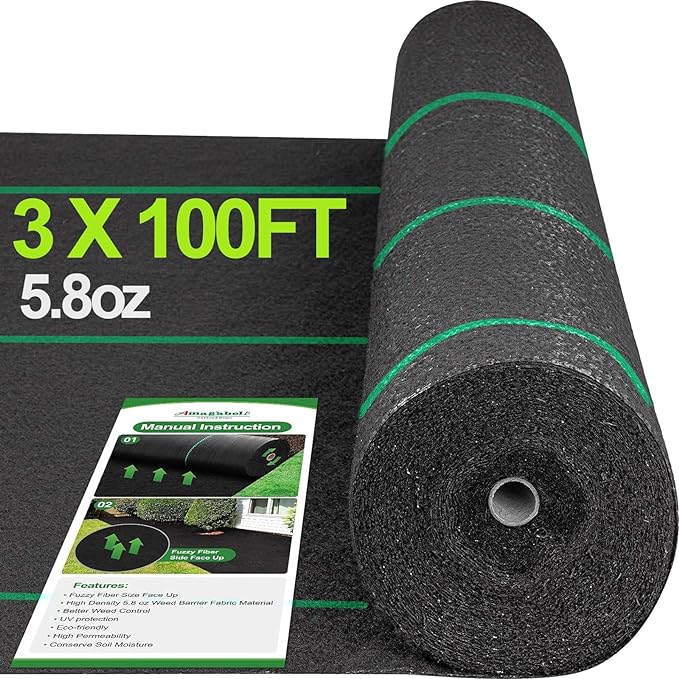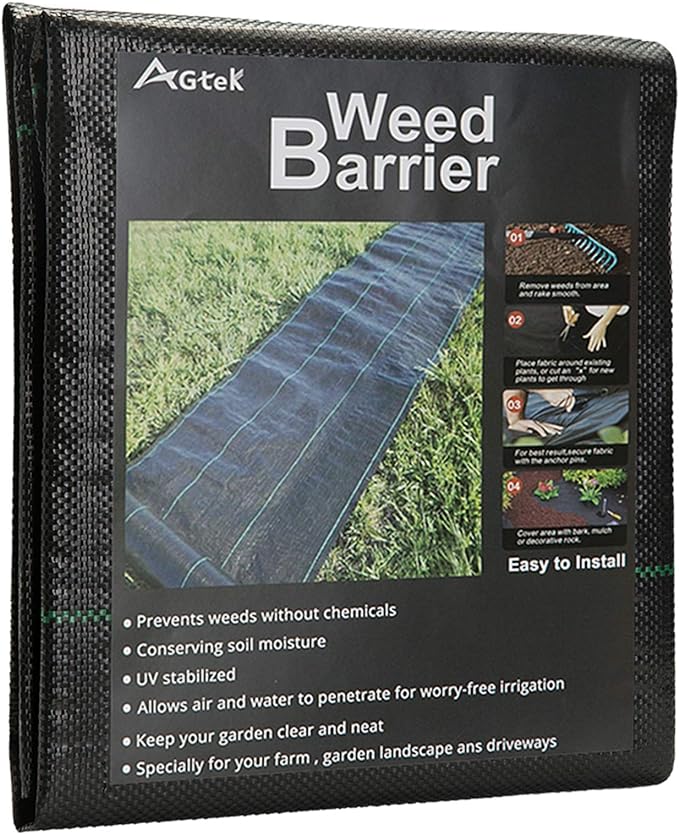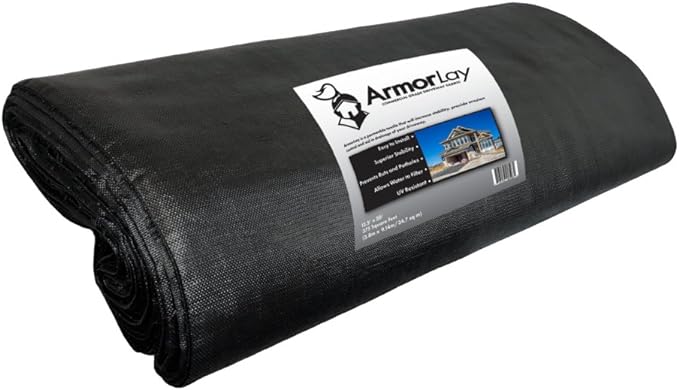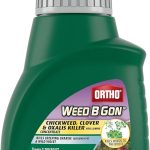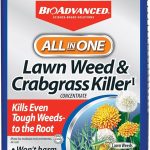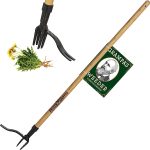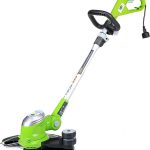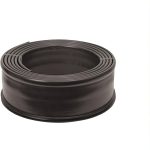As you prepare to transform your outdoor space, you’re likely considering the best ways to control weeds and ensure your garden thrives. One crucial step in achieving this goal is selecting the right landscape fabric. With so many options available, it can be overwhelming to determine which one is best for your specific needs. From durable materials to effective weed barriers, the market offers a range of solutions. But which ones truly deliver? Let’s explore the top landscape fabrics that can help you achieve a weed-free and flourishing garden – and discover the key factors to consider when making your decision.
Contents
- ECOgardener Premium Landscape Fabric Weed Barrier
- Premium Weed Barrier Landscape Fabric
- Dewitt 3-Foot by 100-Foot Non Woven 12-Year Landscape Fabric 12YR3100
- AMAGABELI Weed Barrier Landscape Fabric
- AGTEK Landscape Fabric 4×8 FT Heavy Duty Ground Cover Pack of 2
- ArmorLay Commercial Grade Driveway Fabric
- Factors to Consider When Choosing Landscape Fabric
- Frequently Asked Questions
- Conclusion
ECOgardener Premium Landscape Fabric Weed Barrier
If you’re a homeowner or gardener seeking a reliable and eco-friendly solution for weed control, the ECOgardener Premium Landscape Fabric Weed Barrier stands out as a top choice, offering a durable and heavy-duty fabric that’s easy to install and set up.
This 3ft x 50ft fabric is made of a 5oz material that effectively conserves soil moisture and reduces the need for chemicals.
You’ll appreciate how easy it’s to cut and work with, allowing water to pass through slowly.
With a 4.6-star rating based on nearly 8,000 reviews, it’s clear that many customers have had success with this product.
While some users have reported issues with weeds growing through, the overall consensus is that this fabric is effective and convenient.
Best For: Homeowners, gardeners, and landscapers seeking a reliable and eco-friendly solution for weed control.
Pros:
- Durable and heavy-duty fabric that effectively controls weeds
- Easy to install and set up, with a convenient design that conserves soil moisture and reduces the need for chemicals
- Easy to cut and work with, allowing water to pass through slowly
Cons:
- Some users have reported issues with weeds growing through the fabric
- No explicit warranty information is provided
- Some users may find the 3ft x 50ft size to be too small or too large for their specific needs
Premium Weed Barrier Landscape Fabric
When you need a reliable and heavy-duty solution to block weeds while allowing water and nutrients to reach your plants, the Premium Weed Barrier Landscape Fabric is the best choice for you.
This durable, woven fabric is made from polypropylene, making it strong and tear-resistant.
You’ll appreciate how easy it’s to set up and cut to fit any size or shape, making it perfect for gardens, landscaped areas, and agricultural applications.
The Premium Weed Barrier Landscape Fabric allows water and nutrients to flow through to the soil, promoting healthy and hydrated plants.
With its 3.2oz thickness, you can trust that it’ll effectively block weeds while giving your plants the care they need.
Best For: Gardeners, landscapers, and agricultural professionals looking for a reliable and heavy-duty solution to block weeds while allowing water and nutrients to reach their plants.
Pros:
- Blocks weeds while allowing water and nutrients to flow through to the soil
- Easy to install and cut to fit any size or shape
- Made from durable polypropylene, making it strong and tear-resistant
Cons:
- No specific warranty information is provided
- No information is given on the product’s UV resistance
- The product’s weight and package dimensions may make it difficult to handle for some users
Dewitt 3-Foot by 100-Foot Non Woven 12-Year Landscape Fabric 12YR3100
The Dewitt 3-Foot by 100-Foot Non Woven 12-Year Landscape Fabric 12YR3100 is an excellent choice for those seeking a reliable and long-lasting solution to weed control, offering a durable and environmentally safe fabric that allows for healthy and vigorous plant growth while minimizing weed growth.
You’ll appreciate its 3×100 feet dimensions and 3 oz weight, making it ideal for plant and shrub beds or areas prone to weed growth.
This non-woven, hydrophilic treated fabric facilitates improved water and nutrient flow, while preventing light penetration to suppress weeds.
With its UV-treated fabric and design that prevents unraveling, you can trust this product to provide long-term landscape solutions.
Best For: Landscapers, gardeners, and homeowners who want to control weed growth and promote healthy plant growth in their gardens, shrub beds, or landscapes.
Pros:
- Durable and long-lasting, with a 12-year guarantee against degradation
- Allows for optimal plant growth by facilitating water and nutrient flow while suppressing weed growth
- Easy to install and maintain, with a design that prevents unraveling and makes it easy to cut to size
Cons:
- May not be suitable for areas with extremely high weed growth or dense vegetation
- Requires careful installation to ensure effective weed control
- May not be as effective in areas with poor soil quality or inadequate drainage
AMAGABELI Weed Barrier Landscape Fabric
Those seeking a durable and long-lasting solution for their outdoor spaces will appreciate the AMAGABELI Weed Barrier Landscape Fabric, which boasts high tensile strength and tear resistance to effectively prevent weeds from growing.
You’ll love that it’s made of professional-grade polyester material, ensuring high strength and permeability.
This 5.8oz, 3ft x 100ft fabric is perfect for various outdoor uses, from artificial grass to vegetable patches and flower beds.
It’s easy to set up and cut to size, allowing air and water to pass through while keeping weeds at bay.
With a 4.4-star rating from over 2,300 customers, this fabric has proven to be a reliable choice for many.
While some users have reported poor quality or ineffectiveness, most agree it’s a durable and effective weed barrier.
Best For: Those seeking a durable and long-lasting solution for their outdoor spaces, including artificial grass, vegetable patches, and flower beds.
Pros:
- Durable and long-lasting, with high tensile strength and tear resistance
- Easy to set up and cut to size, allowing air and water to pass through while keeping weeds at bay
- Suitable for various outdoor uses, with a professional-grade polyester material ensuring high strength and permeability
Cons:
- Some users have reported poor quality or ineffectiveness
- May not completely prevent weeds from growing through
- A few customers have reported receiving low-quality or defective products
AGTEK Landscape Fabric 4×8 FT Heavy Duty Ground Cover Pack of 2
The AGTEK Landscape Fabric 4×8 FT Heavy Duty Ground Cover Pack of 2 is an excellent choice for weed control due to its heavy-duty design that allows water and air to penetrate for worry-free irrigation.
This product is easy to install and can be used for multiple purposes, including as an underlayment for playground areas and walkways.
With an impressive 4.5-star rating from 558 customers, you can trust that this product delivers on its promises.
AGTEK also offers a guarantee, providing you with the best after-sale service.
Weighing only 1 pound and measuring 13.58 x 10.67 x 2.44 inches, this pack of 2 landscape fabrics is a convenient and effective solution for your weed control needs.
Best For: Landscapers, gardeners, and homeowners looking for a reliable and efficient solution for weed control and playground or walkway underlayment.
Pros:
- Heavy-duty design allows water and air to penetrate for worry-free irrigation
- Easy to install and multi-functional for various uses
- Backed by AGTEK Guarantee for best after-sale service
Cons:
- No specific warranty information provided
- May not be suitable for large-scale landscaping projects
- No additional features or accessories included
ArmorLay Commercial Grade Driveway Fabric
When stabilizing driveways, sidewalks, or construction entrances, you’ll find the ArmorLay Commercial Grade Driveway Fabric to be the top choice for long-term weed control and erosion prevention.
This heavy-duty textile is designed to increase stability, prevent ruts and potholes, and aid in substrate stabilization.
You’ll appreciate its versatility as an underlayment option for construction entrances, soil separation, sidewalk stabilization, stone pavers, rock, and riprap.
With an easy installation process using Weed Armor 6′ Landscape Pins (not included), you’ll be enjoying the benefits of this fabric in no time.
With a 4.7-star rating from 962 customers, you can trust that this product is durable, easy to install, and effective in preventing weeds and erosion.
Best For: Construction professionals, homeowners, and landscapers looking for a durable and effective solution for driveway stabilization, underlayment, and erosion control.
Pros:
- Provides long-term weed control and erosion prevention
- Easy to install with Weed Armor 6′ Landscape Pins (not included)
- Durable and heavy-duty textile for driveway stabilization, underlayment, and erosion control
Cons:
- Requires separate purchase of Weed Armor 6′ Landscape Pins for installation
- No warranty information is provided upfront
- May not be suitable for small-scale or DIY projects due to its commercial-grade design
Factors to Consider When Choosing Landscape Fabric
When selecting a landscape fabric, you’ll want to determine several key factors to guarantee you get the right one for your needs.
You’ll need to think about the type of material, how durable it is, and how well it suppresses weeds.
You’ll also want to ponder its permeability to moisture, as well as its resistance to UV rays.
Material Options
You’ll need to weigh the pros and cons of different materials when selecting a landscape fabric that suits your specific needs.
Landscape fabrics come in a variety of materials, each with its own strengths and weaknesses.
Polypropylene and polyester are two popular options, known for their durability and affordability. However, they can be prone to UV degradation and may not be suitable for areas with high sunlight exposure.
On the other hand, woven landscapes fabrics, made from materials like polyethylene or polybutylene, offer excellent weed control and are often more resistant to UV damage.
They can be more expensive than polypropylene or polyester, but their added durability may be worth the extra cost.
Another option is non-woven fabrics, which are often made from natural fibers like cotton or jute.
These eco-friendly alternatives are biodegradable and can add organic matter to the soil as they break down.
Ultimately, the right material for you’ll depend on your specific needs, budget, and environmental concerns.
Durability Factors
As you evaluate different landscape fabrics, consider the durability factors that will impact the product’s performance over time, including the fabric’s thickness, material density, and UV resistance.
These factors will determine how well the fabric withstands environmental stressors and continues to control weeds effectively.
Thickness is a critical factor, as a thicker fabric will be more resistant to punctures and tears.
Look for fabrics with a thickness of at least 30 mils for maximum durability.
Material density, measured in ounces per square yard, also affects the fabric’s durability.
A higher density indicates a more robust fabric that can handle heavy foot traffic and harsh weather conditions.
UV resistance is another essential factor, as exposure to sunlight can cause the fabric to degrade over time.
Look for fabrics with built-in UV stabilizers or treatments that protect against UV damage.
Weed Suppression
With landscape fabrics, you can effectively suppress weeds by choosing the right material, density, and thickness, which can lead to a significant reduction in weed growth.
By selecting a fabric with a thickness of 3-5 oz, you’ll prevent light penetration and create a physical barrier that prevents weeds from germinating.
In fact, a study found that using landscape fabric can reduce weed growth by up to 90%, making it an effective method for weed suppression in gardens and landscapes.
The type of material used in landscape fabric also plays a role in its weed-suppressing abilities.
Some materials, like polypropylene or polyester, are more effective than others.
Additionally, the density of the fabric, measured in ounces per square yard, affects its ability to suppress weeds.
Denser fabrics are more effective at preventing weed growth.
Moisture Permeability
When selecting a landscape fabric, consider its moisture permeability, as it directly affects the health of your plants and the overall performance of your landscape. You want a fabric that allows water to reach your plants’ roots while preventing weeds from growing.
A breathable fabric guarantees your soil doesn’t become waterlogged, reducing the risk of root rot and other problems.
Look for a fabric with a high moisture permeability rate, usually measured in liters per square meter per second (L/m²s). A higher rate indicates better water penetration.
For example, a fabric with a permeability rate of 100 L/m²s or higher is suitable for most gardens.
Keep in mind that moisture permeability can vary depending on the fabric’s material, thickness, and weave pattern.
Some fabrics may be more prone to clogging, reducing their permeability over time.
When choosing a landscape fabric, consider your specific climate and soil type to confirm you select a product that meets your needs.
UV Resistance Level
You’ll also want to evaluate the fabric’s UV resistance level, a critical factor in guaranteeing your landscape fabric remains durable and effective over time.
Exposure to sunlight can cause fabrics to break down, leading to a decrease in their effectiveness.
That’s why choosing a landscape fabric with a high UV resistance level is crucial. Look for fabrics with a UV resistance level of at least 500 hours to confirm the fabric can withstand outdoor conditions for an extended period.
Fabrics with high UV resistance levels are more durable and less prone to degradation, resulting in long-term weed control and soil stabilization. Additionally, they tend to be more resistant to tears and punctures, making them a better choice for high-traffic areas or areas with heavy weed growth.
When selecting a landscape fabric, consider the level of UV resistance required based on the specific application, climate, and expected lifespan of the fabric. By selecting a fabric with the right level of UV resistance, you can guarantee your landscape fabric remains effective and durable over time.
Puncture Resistance
While selecting a landscape fabric, consider the puncture resistance rating, a key factor that determines the fabric’s ability to withstand damage from sharp objects, roots, and other external forces that can compromise its weed-barrier performance. You want a fabric that can resist punctures and tears, maintaining effective weed control and soil stabilization over time.
A higher puncture resistance rating indicates a fabric’s increased ability to resist damage and maintain its integrity. The rating is often measured in pounds per square inch (psi), with higher ratings indicating greater durability and resistance to damage.
When choosing a landscape fabric, consider the specific application and potential hazards, such as rocky or root-filled soil. You’ll want a fabric that can withstand the expected level of puncture force.
A fabric with high puncture resistance can reduce the need for frequent replacements, saving you time and resources in the long run. By considering puncture resistance, you can guarantee your landscape fabric provides effective weed control and soil stabilization for years to come.
Fabric Thickness Options
Considering the specific demands of your project, you need to select a landscape fabric with the right thickness, as it substantially impacts the fabric’s performance, cost, and overall effectiveness in controlling weeds and stabilizing soil.
The thickness of the fabric is measured in ounces (oz) per square yard, with common options ranging from 3oz to 12oz.
Thicker fabrics, such as 5oz or 12oz, provide more durable weed control and are ideal for heavy-duty landscaping, construction, and industrial projects.
Thinner fabrics, like 3oz, are better suited for residential gardening and small-scale landscaping.
The thickness of the fabric also affects its permeability, with thicker fabrics allowing less water and air to pass through, which can impact plant growth and soil health.
Additionally, fabric thickness impacts the product’s cost, with thicker fabrics generally being more expensive than thinner ones.
Ultimately, the choice of fabric thickness depends on the specific requirements of your project, including the type of plants being used, the desired level of weed control, and the expected foot traffic or environmental stress.
Installation Ease
When selecting a landscape fabric, you must also bear in mind the ease of installation, as it can substantially impact the overall efficiency and effectiveness of your project.
The weight and thickness of the material play a significant role in installation ease. Heavier and thicker fabrics are more challenging to handle and install, while lighter and thinner ones are generally easier to work with.
Additionally, the texture of the fabric matters – a smooth, non-abrasive surface is easier to install than a rough, abrasive one that can catch on rocks or other obstacles.
The weave and density of the fabric also affect installation ease. Tighter weaves or denser materials can be more difficult to cut and shape around obstacles, while looser weaves are often easier to work with.
The size of the fabric roll is another factor to keep in mind – larger rolls are more cumbersome to handle and maneuver than smaller ones.
Finally, some landscape fabrics come with pre-marked lines or grids, which can aid in measuring and cutting, making installation easier and more accurate.
Frequently Asked Questions
Can I Use Landscape Fabric Under Pavers or Concrete?
You’re wondering if you can use landscape fabric under pavers or concrete. While it’s possible, it’s not recommended as the fabric may degrade or get damaged, and it won’t provide sufficient drainage or stabilization.
How Long Does It Take to Install Landscape Fabric?
Did you know that 70% of homeowners spend over 10 hours a week on yard work? You’ll be glad to know that installing landscape fabric can be done quickly, taking around 30 minutes to an hour per 100 square feet, depending on the complexity of the area.
Is Landscape Fabric Safe for Vegetable Gardens?
You’re wondering if landscape fabric is safe for your veggie garden. The good news is that it is, as long as you choose a fabric that’s specifically designed for gardens and doesn’t contain harmful chemicals.
Can I Cut Landscape Fabric With Scissors or a Knife?
You can cut landscape fabric with scissors or a utility knife, but be careful not to tear or stretch it. Use sharp blades and cut slowly, following the fabric’s weave to get a clean edge.
Will Landscape Fabric Affect Soil Temperature and Moisture?
‘I know you’re worried that using landscape fabric will harm your soil, but don’t worry, it won’t substantially affect soil temperature or moisture levels, so you can breathe easy – your soil will still thrive!’
Conclusion
You’ve made it to the end of our garden guide!
Now, it’s time to sow the seeds of success in your garden.
With the right landscape fabric, you’ll be harvesting a bounty of benefits, from weed-free zones to conserved soil moisture.
Remember, a strong fabric is like a shield for your garden, protecting it from unwanted invaders.
Choose wisely, and your garden will bloom like a masterpiece, painting your outdoor space with vibrant colors and lush life.
